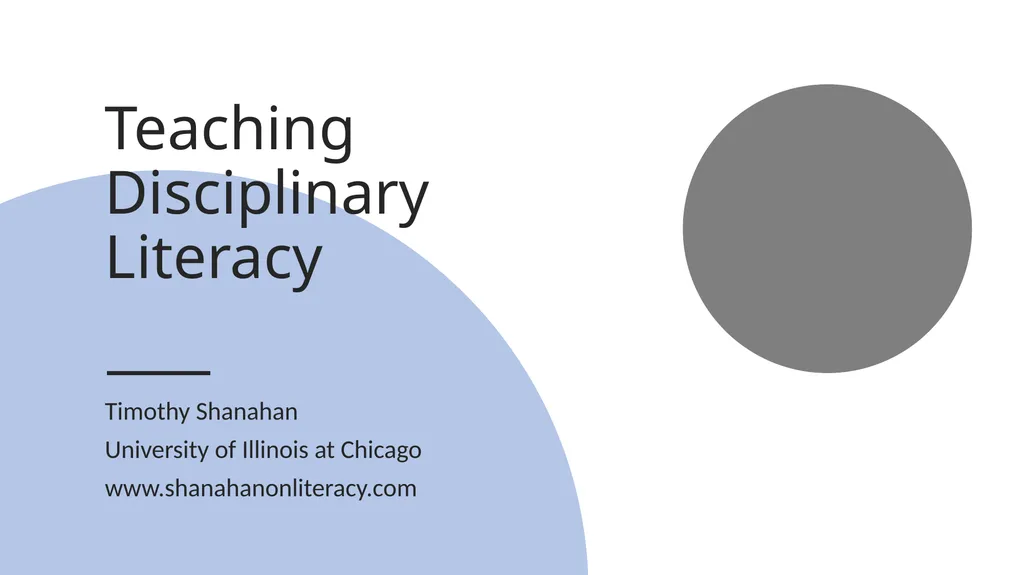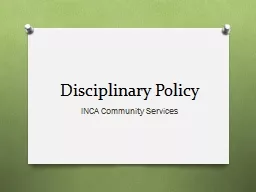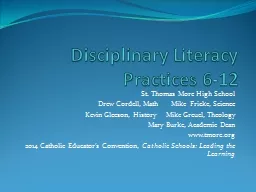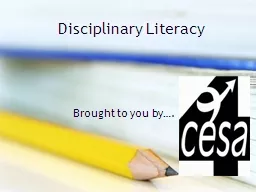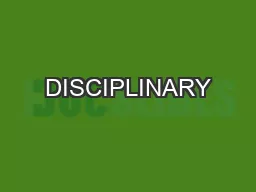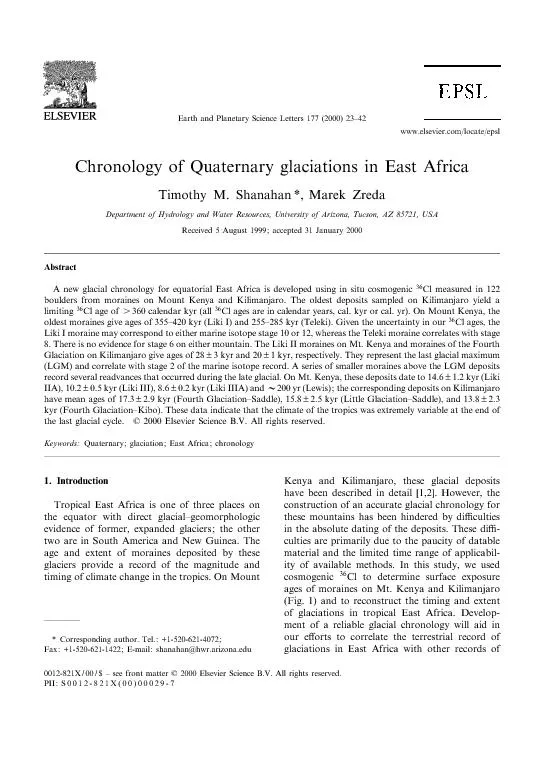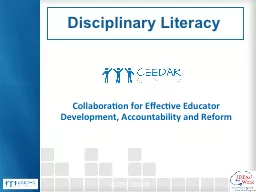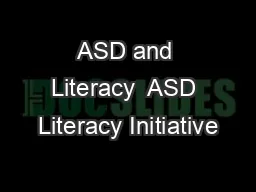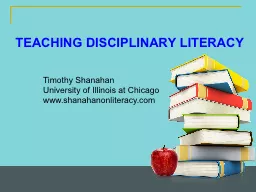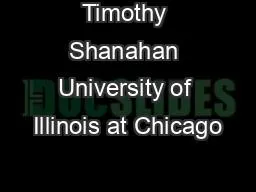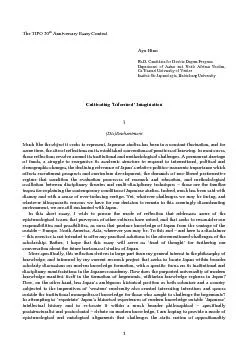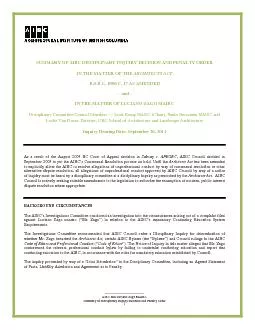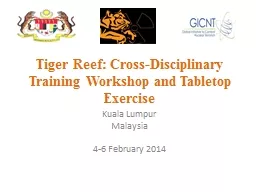Teaching Disciplinary Literacy Timothy Shanahan
Author : marina-yarberry | Published Date : 2025-08-04
Description: Teaching Disciplinary Literacy Timothy Shanahan University of Illinois at Chicago wwwshanahanonliteracycom Audience Questions What is content area readingliteracy What is disciplinary literacy How is your schooldistrict addressing
Presentation Embed Code
Download Presentation
Download
Presentation The PPT/PDF document
"Teaching Disciplinary Literacy Timothy Shanahan" is the property of its rightful owner.
Permission is granted to download and print the materials on this website for personal, non-commercial use only,
and to display it on your personal computer provided you do not modify the materials and that you retain all
copyright notices contained in the materials. By downloading content from our website, you accept the terms of
this agreement.
Transcript:Teaching Disciplinary Literacy Timothy Shanahan:
Teaching Disciplinary Literacy Timothy Shanahan University of Illinois at Chicago www.shanahanonliteracy.com Audience Questions What is content area reading/literacy? What is disciplinary literacy? How is your school/district addressing these? Content Area Literacy Content area literacy has long championed the idea of “every teacher a teacher of reading” The approach emphasizes teaching English Language Arts with content texts Focus is on making students better students by building up their reading comprehension and study skills with content textbooks Goal: To make students better students What is the same across the disciplines? Disciplinary Literacy Disciplinary Literacy is a completely different concept It is not about bringing ELA standards, methods, or approaches to the subject area classroom Each discipline has its own ways of using text to create, disseminate, and evaluate knowledge, and it is this that the new standards are asking us to teach Goal is to apprentice students into the disciplines What is different across the disciplines? Research Sources of Disciplinary Example of Expert Reader Study Wineburg’s study of history reading: Sourcing: considering the author and author perspective Contextualizing: placing documents within their historical period and place Corroboration: evaluating information across sources Increasing Specialization of Literacy Generalizable vs. Specialized Skills Generalizable vs. Specialized Skills (cont.) Chemistry Summarization Chemistry Summarization Content Area Vocabulary Students need to learn terminology in all fields The same study techniques would accomplish this no matter what the words Graphic organizers, semantic maps, word sorts, rate knowledge of words, analyze semantic features of words, categorizing/ mapping words, synonym webs, etc. Disciplinary Literacy Vocabulary No differences in how vocabulary is learned, but the content of vocabulary curriculum needs to differ The nomenclature of each field differs in nature Science, for example, emphasizes words intentionally constructed from Greek and Latin roots (precise, dense, stable, interrelated meanings that are recoverable): deoxyribonucleic acid History, on the other hand, emphasizes the meanings of metaphorical terms and words with a political point of view: Civil War, War Between the States, War of Northern Aggression Disciplinary Literacy Vocabulary (cont.) Literature: words that evoke emotion, the senses, human relationships The nomenclature of each field differs in nature Example…. where I would have lived through all that impassioned, insane joy of the hunt, when as I climb the rock my face contorted, gasping, shouting voluptuously, senseless words…. (Nabokov, Father’s Butterflies) Frequency of Morphology Differs by Discipline Different disciplines emphasize different words But the frequency or value of prefixes, suffixes,
